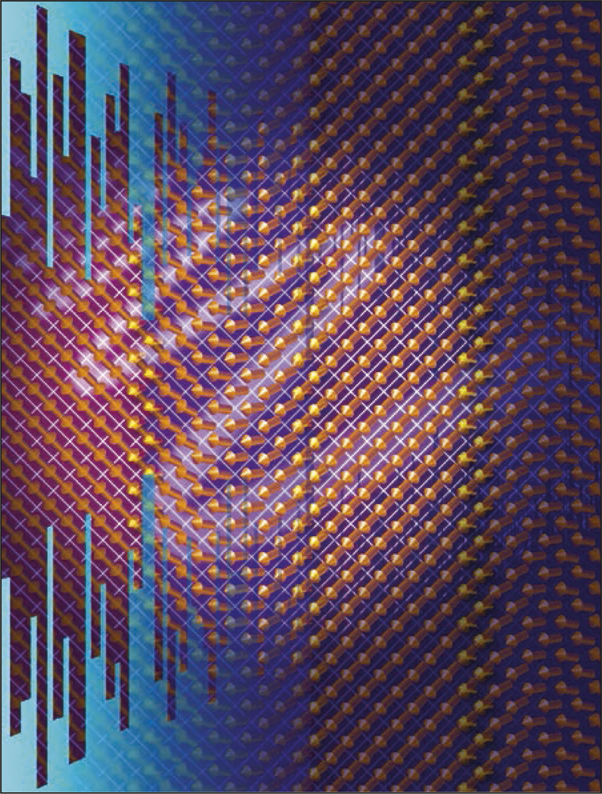Currently, mobile devices rely on the ability to tune or switch device radio-frequency. The rising demands for device miniaturization and high data transmission rates, however, necessitate more efficient use of the microwave spectrum. An ideal thin-film dielectric would embody both high dielectric properties and wide-range frequency tunability. However, ferroelectric domain walls have been thought to lead to an unavoidable tradeoff between the dielectric loss and tunability, limiting the performance of thin-film dielectrics.
In a recent publication in Nature (doi:10.1038/s41586-018-0434-2), it was reported that these naturally occurring ferroelectric domain walls can also lead to extremely low dielectric loss. Researchers from Drexel University, Bar-Ilan University, the University of California, Berkeley, and the University of California, Santa Barbara, demonstrated that domain walls can oscillate under very weak driving electric fields in BaxSr1–xTiO3 (BST) films. With careful design and engineering, the domain-wall-rich films permit reduction in values of dielectric loss to those that are orders of magnitude lower than the bulk domain-wall-free counterpart, and covers gigahertz microwave-frequency range.
“Normally a domain wall is static, or it can move in one direction in the presence of a sufficiently large bias electric field. But the energy landscape of a domain wall can be engineered and tuned so that under certain conditions the barrier to its motion is small enough to permit the domain wall to move back and forth, in resonance with even a weak incident microwave field,” says Jonathan E. Spanier, the leader of the research group from Drexel University.

Artist’s rendering of the oscillating domain walls. Credit: Felice Macera.
Essential to the large capacitance and frequency tunability are the abundance of different thermodynamic phases and a high density of domain walls. Engineering a film material to have many and more easily available phases allows the material to attain much higher capacitance tuning with the same voltage.
“We first carried out theoretical simulations to predict the energy landscapes of domain-rich films, and then optimized the substrate materials and their thickness to achieve the desired phases and density of domain walls,” says Zongquan Gu, a postdoctoral fellow from Spanier’s group and the lead author of the study. “Thus far we have identified how the abundance of different thermodynamic domain-wall-variant phases can be realized to produce the desired extrinsically driven properties,” he says.
The domain-wall-enhanced ferroelectrics demonstrated a microwave tunability (1∼8 GHz) of the loss minimum that is 100 times greater than the previous best intrinsically tunable material. The new approaches, including design of new engineered materials that have microwave-frequency solid-state ionic oscillators, may enable more facile access to the increasingly congested radio-frequency spectrum used in current telecommunications devices, as well as other novel applications.
“This work nicely demonstrates that certain configurations of ferroelectric domain walls can really significantly enhance materials performance,” says Jiri Hlinka from the Institute of Physics of the Czech Academy of Sciences. It would be great news for the development of the next generation of tunable antennas and similar microwave devices if further work can investigate whether the field-induced variation of microwave quality factor is a reproducible intrinsic property of the BST thin films, Hlinka adds.
Next, the researchers plan to expand their modeling efforts to explore other orientations of domain walls. They also plan to further probe and clarify the mechanism, and capacity for prediction of properties, in order to better design and engineer the dielectric materials.

